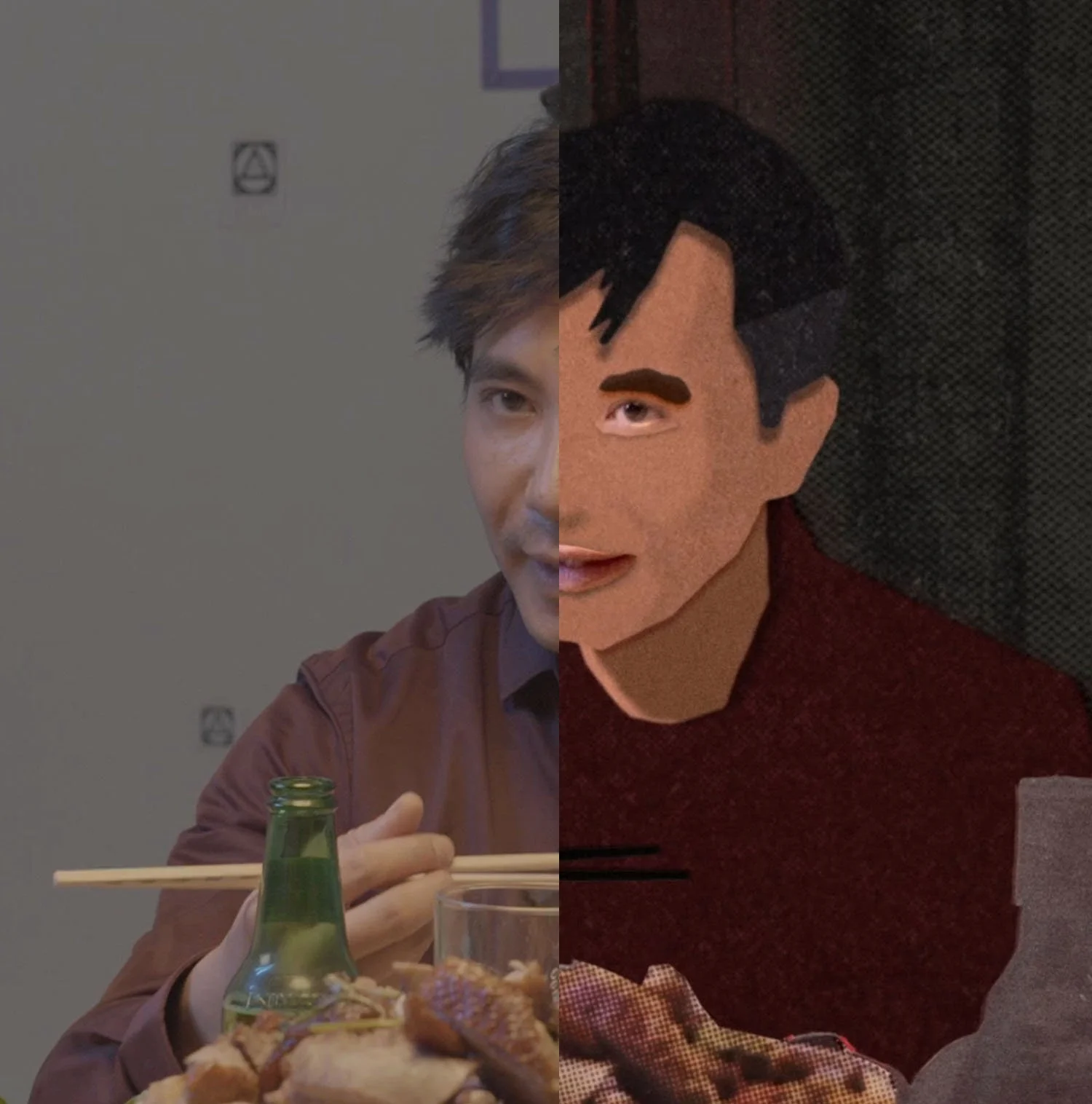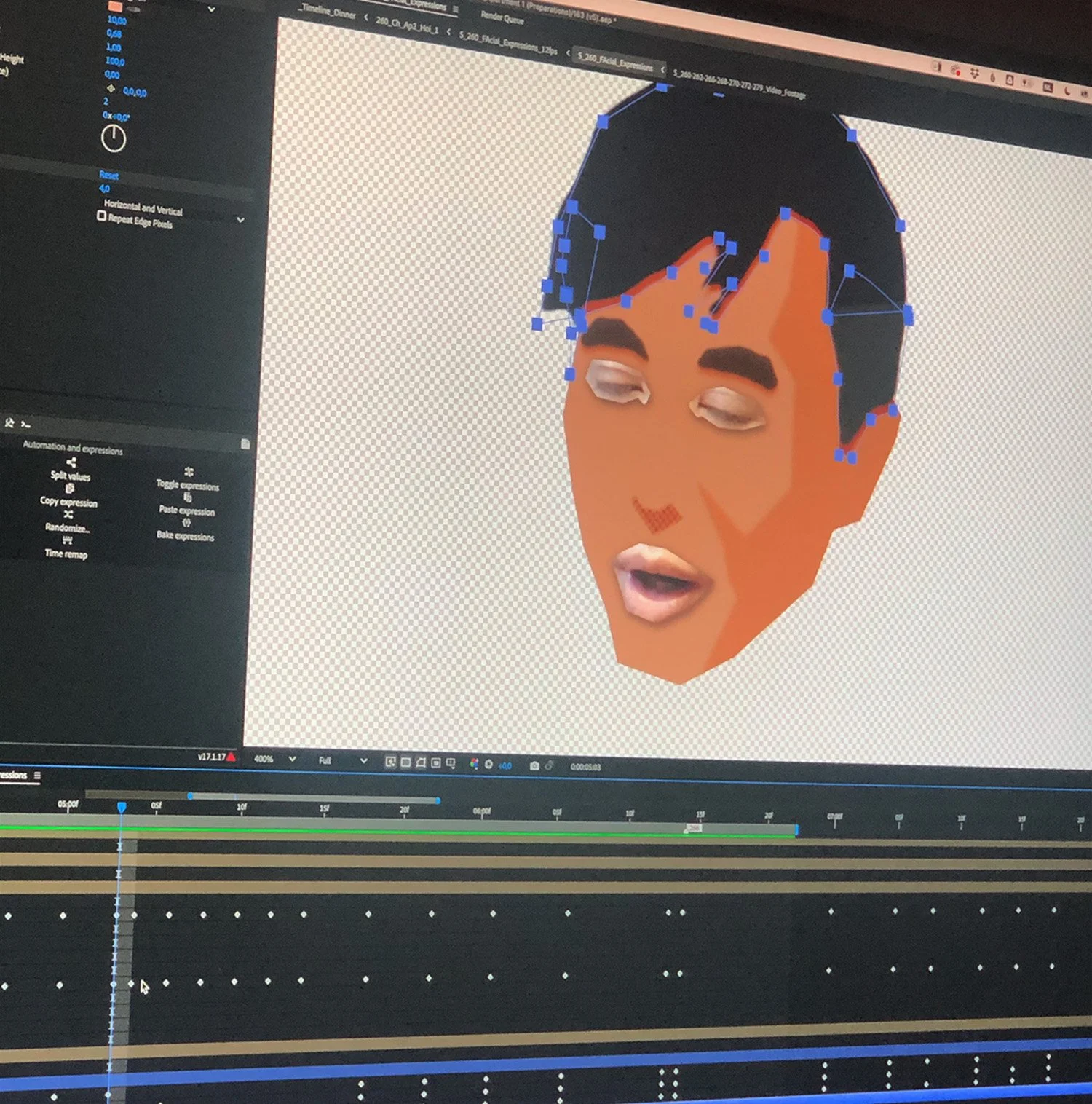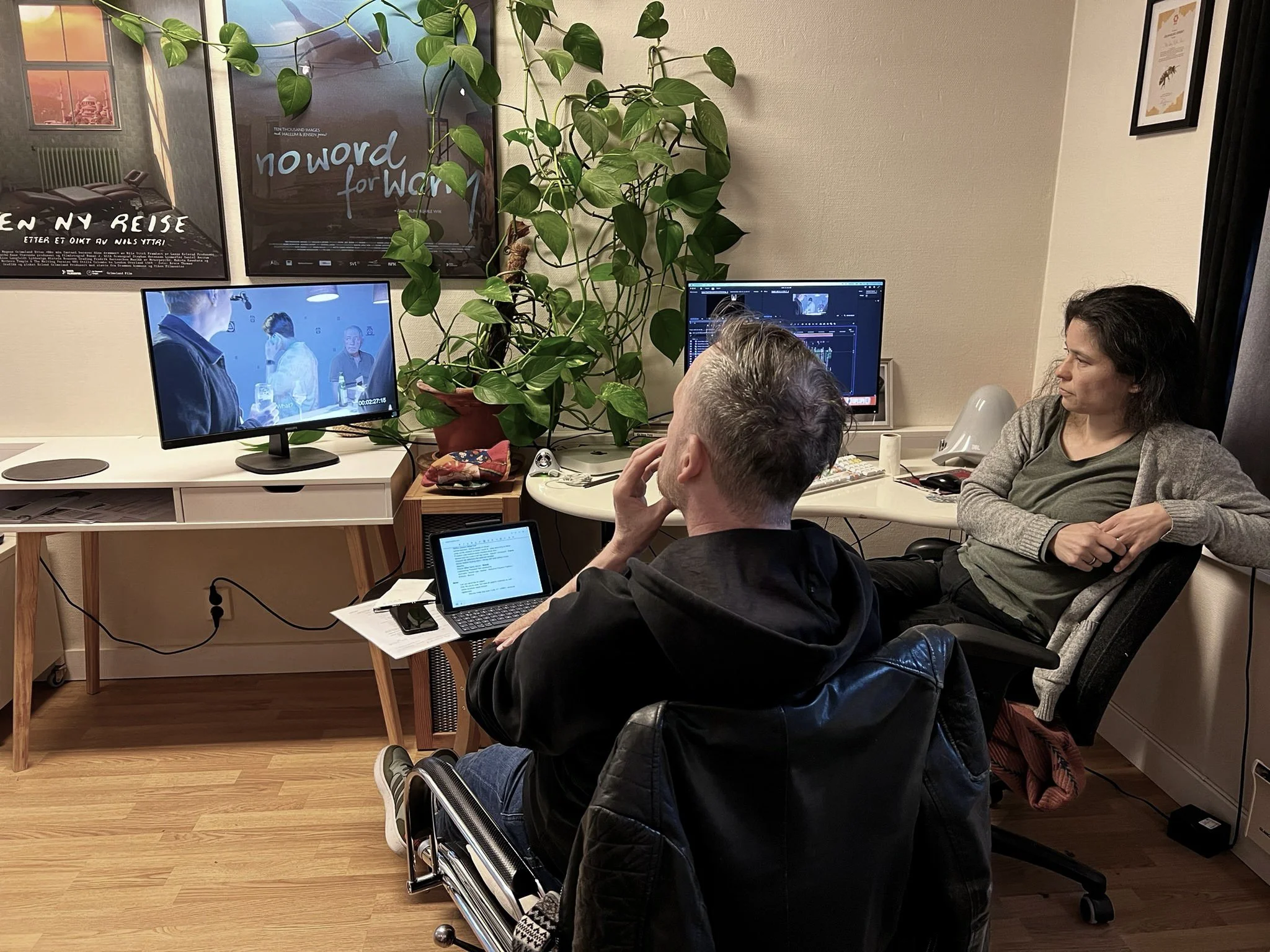making of
why animation?
For many of the people featured in Breaking Walls, including journalists, activists, and those with political or family ties in repressive countries, appearing recognisably on screen was simply not an option due to the risk of repercussions. For reasons of safety, animation became not just a necessity, but a conscious artistic choice.
The film uses two distinct visual styles: a photo-realistic collage approach for the dramatized scenes, and a raw cinéma vérité aesthetic for the interviews. This combination enhances the film’s authenticity while offering protection to those whose identities must remain hidden.
production
Every film comes with its own set of challenges. Breaking Walls is a hybrid production that combines live-action footage with animation. In addition to authentic elements like real eyes and mouths, clearly visible in the film, the live-action material also served as the basis for a specific animation technique: rotoscoping.
This method involves editing the footage frame by frame. First, a full edit is made from the filmed scenes. At a later stage, this edit is handed over to the animators, who then transform it into animation. In essence, two films are created: the first using live-action footage, the second reinterpreted in animated form.
before and after
rotoscoping
As Breaking Walls was shot in a studio without physical backgrounds, all environments had to be created from scratch by background artist Sylvie Flamand.
The following fragment offers a glimpse into the various stages of the production process for a single scene. In total, around 300 shots were created this way. The entire production of Breaking Walls, from live-action filming, editing to final delivery of the animated sequences, took nearly two years. A tremendous challenge, as you can judge for yourself.
Like every other film, Breaking Walls also went through a post-production phase, including sound design, foley, and colour grading. However, due to the dynamic relationship between sound and animation, we chose a more integrated approach.
A rough sound base - with early sound design elements - was created during the animation phase. This allowed the animators to anticipate timing, atmosphere, and emotional cues.
In turn, the evolving animations helped shape and improve the final sound design. This allowed both elements to evolve in dialogue with each other, resulting in a richer, more cohesive audio-visual experience.
various stages of the animation production
collaboration
Director Jan-Dirk Bouw places great importance on portraying Chinese culture in the most authentic and respectful way possible. That’s why the story and film were developed in close collaboration with members of the Chinese diaspora in the Netherlands and Norway.
Script coach Ernie Tee supported the screenplay development, while sinology expert Doris Yeung provided additional cultural insights to the script. Aaron Wan led the casting process, and sinologists such as Fenmei Hu contributed to the art direction.
Editor and producer Mette Cheng Munthe-Kaas - in collaboration with Johanna Dorothea Raita - played a key role in shaping the final film, bringing a refined Asian perspective and narrative depth to Breaking Walls.









